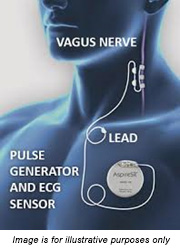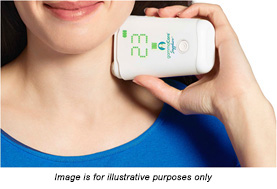NEUROLOGY: EPILEPSY MANAGEMENT

Vagus Nerve Stimulation (VNS) Versus New Pharmacological Therapy in Management of Refractory Partial Seizures.
Epilepsy is the most common neurological condition characterized by recurrent spontaneous seizures. The ultimate goal is to achieve seizure-freedom with minimum side effects. Partial seizures involving one hemisphere of the brain usually present with no loss of consciousness.
Diagnosis of partial epilepsy depends on EEG findings, clinical picture, history and physical, laboratory data, and imaging studies. Despite the fact that over the past years patients with epilepsy have the ability to be on newer anti-epileptic regimens, about a third of patients will be refractory to the pharmacological therapy.
Health care providers investigate other therapeutic options in addition to medical management that can be help to control refractory partial seizures. As such, for the past two decades, vagus nerve stimulation (VNS) has been an alternative, safe, widely used adjunctive therapy option for refractory partial seizures.

The systematic review of literature provided the available evidence of the benefit of Aptiom, Keppra XR, Vimpat versus VNS as an add on-demand therapy for refractory partial seizures. In this particular study several things have been compared and discussed: (a) medical management of epilepsy algorithms, (b) new antiepileptic drugs approved as an adjunctive and/or monotherapy for refractory partial seizures in patients ≥ 12 years of age, (c) importance of the refractory seizure control, (d) vagus nerve stimulation (VNS) implants approved for patients ≥ 12 years of age as an alternative therapy to the medical management of refractory partial seizures, (e) and significance of research for neurologists, epileptologists, general practitioners, and patients who currently suffer from recurrent uncontrolled partial seizure activity.
Furthermore, the available literature revealed multiple research modalities, including (a) descriptive, (b) informative, (c) longitudinal, (d) randomized controlled trials, and (e) pivotal clinical trials. A few longitudinal studies exploring management of refractory partial seizures has been reviewed. Descriptive articles emphasizing the importance of (a), (b), (c), (d), and (e) has been featured. Various approaches to care of adolescents and adult population ≥ 12 years of age were discussed.
As the result of this research paper, we found that newer antiepileptic drug regimens were not superior to the vagus nerve stimulation (VNS) therapy. Furthermore, optimal results demonstrated the ability to achieve seizure freedom and an overall reduction in seizure activity only by simultaneous use of antiepileptic drug/drugs and a vagus nerve stimulation device.

Author Information
Kamilya Dvoyashkina, PhD, MMS, PA-C
Associate Physician, Hospital Medicine,
Medical Subspecialties Institute,
Cleveland Clinic Abu Dhabi
 CME Activities Secretariat
CME Activities Secretariat